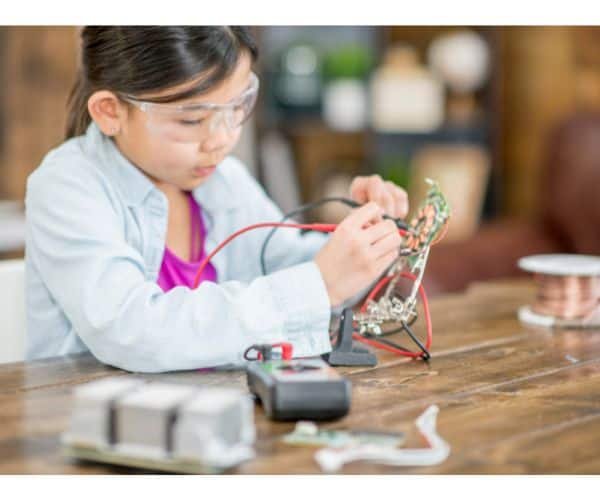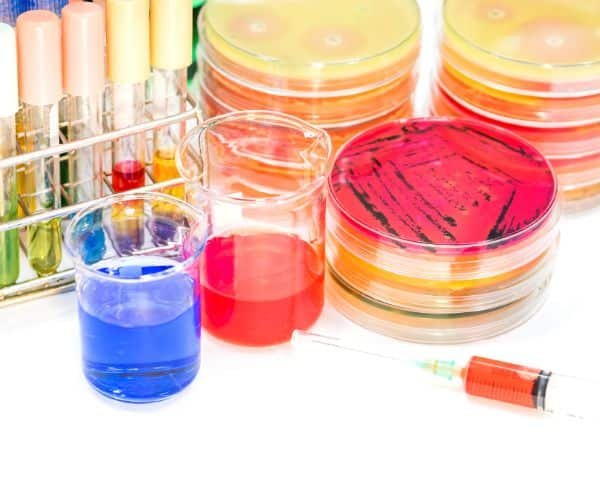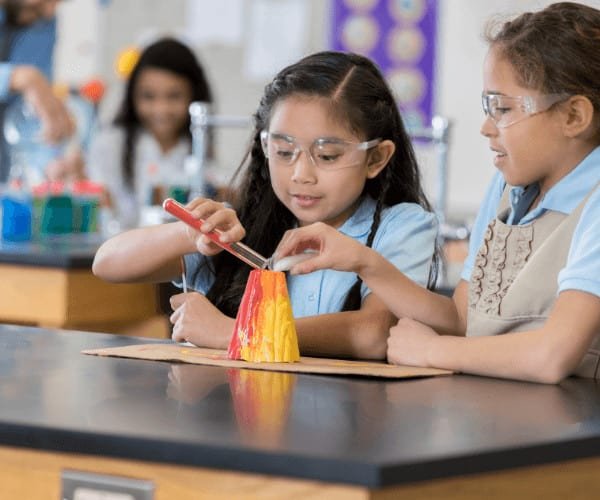Are you struggling to find engaging and educational science projects to incorporate into your STEM curriculum? Look no further! As a wholesale supplier and OEM supplier of STEM toys and science kits, I have compiled a list of science project ideas that are sure to excite and educate your students.
From exploring the properties of matter to understanding the principles of electricity, these projects are designed to enhance the learning experience of students in various fields of science. So, let’s dive in and discover some inspiring science project ideas!
What Are Some Science Project Ideas To Boost My Stem Curriculum?
Next we’ll explore 14 science projects that you can incorporate into your curriculum to help your students learn and grow.
Build a Solar Oven
Building a solar oven is a fun and easy project that can teach students about renewable energy and the greenhouse effect. Begin by having students design their own solar oven using materials like cardboard, aluminum foil, and plastic wrap. Then, have them test their ovens by cooking food like s’mores or hot dogs. This project is a great way to teach students about energy transfer and the importance of sustainable energy sources.
Another way to approach the solar oven project is to have students research existing solar ovens and compare their designs with those of the class. Students can then create a chart or graph to compare the efficiency and effectiveness of different designs.
Finally, you can have students discuss the potential applications of solar ovens in different parts of the world where traditional cooking methods may not be available. This project can help students understand the importance of sustainable energy sources and their impact on global communities.
Create a Homemade Battery
Creating a homemade battery is a great way to teach students about the chemical reactions that power everyday devices like flashlights and remote controls. Begin by having students research the basic components of a battery and how they work. Then, have them experiment with different materials like copper wire, aluminum foil, and saltwater to create a simple battery.
Students can then test their batteries by using them to power an LED light or a small motor. They can also compare the efficiency of their homemade batteries with those of commercial batteries. This project is a great way to teach students about the chemical reactions that power everyday devices and how to create their own energy source.
Finally, you can have students discuss the potential applications of homemade batteries in different contexts, such as emergency situations or remote locations where traditional power sources may not be available. This project can help students understand the practical applications of science and technology in everyday life.
Construct a Wind Turbine
Constructing a wind turbine is a great way to teach students about renewable energy and the physics of wind power. Begin by having students research the basic components of a wind turbine and how they work. Then, have them experiment with different materials like paper, cardboard, and plastic to create a simple wind turbine.
Students can then test their wind turbines by using them to power an LED light or a small motor. They can also compare the efficiency of their homemade wind turbines with those of commercial turbines. This project is a great way to teach students about the physics of wind power and the importance of sustainable energy sources.
Finally, you can have students discuss the potential applications of wind turbines in different parts of the world where traditional power sources may not be available. This project can help students understand the impact of renewable energy on global communities.
Experiment with Static Electricity
Experimenting with static electricity is a fun and easy project that can teach students about the properties of electricity and the impact of friction. Begin by having students experiment with different materials like balloons, wool, and plastic wrap to create static electricity.
Students can then test their static electricity by using it to power a small motor or to create sparks. They can also compare the efficiency of different materials in creating static electricity. This project is a great way to teach students about the properties of electricity and how it can be harnessed in everyday life.
Finally, you can have students discuss the potential applications of static electricity in different contexts, such as in the creation of electronics or in the prevention of electrostatic discharge. This project can help students understand the practical applications of science and technology in everyday life.
Design a Rube Goldberg Machine
Designing a Rube Goldberg machine is a fun and challenging project that can teach students about physics and engineering. Begin by having students research the basic components of a Rube Goldberg machine and how they work. Then, have them design their own machines using materials like dominoes, marbles, and pulleys.
Students can then test their machines to see how many steps they can include and how complex they can make them. They can also compare the efficiency of different designs and materials. This project is a great way to teach students about the principles of physics and engineering in a fun and engaging way.
Finally, you can have students discuss the potential applications of Rube Goldberg machines in different contexts, such as in manufacturing or in the creation of complex systems. This project can help students understand the practical applications of science and technology in everyday life.
Study the Effects of Microgravity
Studying the effects of microgravity is a fascinating project that can teach students about the properties of space and the impact of gravity. Begin by having students research the basic principles of microgravity and how it affects the human body.
Students can then design their own experiments to test the effects of microgravity on different materials or organisms. They can also analyze data from previous experiments conducted by NASA or other space agencies. This project is a great way to teach students about the properties of space and the impact of gravity on the human body and other objects.
Finally, you can have students discuss the potential applications of microgravity research in different contexts, such as in the development of space medicine or in the creation of new materials. This project can help students understand the practical applications of science and technology in space exploration.
Explore the Properties of Light
Exploring the properties of light is a fascinating project that can teach students about the physics of light and how it interacts with different materials. Begin by having students research the basic principles of light and how it travels.
Students can then experiment with different materials like prisms and lenses to see how they affect the properties of light. They can also create their own optical illusions using mirrors and other reflective surfaces. This project is a great way to teach students about the properties of light and how it can be manipulated in different contexts.
Finally, you can have students discuss the potential applications of light research in different contexts, such as in the development of new optical technologies or in the study of astronomy. This project can help students understand the practical applications of science and technology in everyday life.
Explore the Properties of Sound Waves
Exploring the properties of sound waves is a fascinating project that can teach students about the physics of sound and how it interacts with different materials. Begin by having students research the basic principles of sound and how it travels.
Students can then experiment with different materials like tubes and speakers to see how they affect the properties of sound. They can also create their own musical instruments using everyday materials like rubber bands and cups. This project is a great way to teach students about the properties of sound and how it can be manipulated in different contexts.
Finally, you can have students discuss the potential applications of sound research in different contexts, such as in the development of new audio technologies or in the study of acoustics. This project can help students understand the practical applications of science and technology in everyday life.
Investigate the Effects of Acid Rain
Investigating the effects of acid rain is an important project that can teach students about the impact of human activity on the environment. Begin by having students research the basic principles of acid rain and how it affects ecosystems.
Students can then conduct experiments to test the effects of acid rain on plants or other organisms. They can also analyze data from previous studies conducted by environmental agencies. This project is a great way to teach students about the impact of human activity on the environment and how we can work to reduce our carbon footprint.
Finally, you can have students discuss the potential solutions to acid rain and other environmental issues. This project can help students understand the practical applications of science and technology in environmental conservation.
Observing Plant Growth
One of the easiest and most rewarding science projects you can do with your students is observing plant growth under different conditions. This project can be done in a variety of ways, but one simple method is to have students plant seeds in different soils and observe how they grow over time.
Start by having students research different types of soil and their properties. Then, provide them with different types of soil and have them plant the same type of seed in each one. Over the course of several weeks, have students observe and record the growth of each plant, noting any differences in height, color, or overall health.
To take this project one step further, have students also vary the amount of sunlight and water each plant receives. This will help them understand the importance of these factors in plant growth and give them a deeper appreciation for the natural world around them.
Investigating the Physics of Roller Coasters
If you’re looking for a science project that will really get your students excited, look no further than investigating the physics of roller coasters. This project is perfect for middle and high school students who are interested in engineering and physics.
Start by having students research the different types of roller coasters and their components, such as loops, drops, and corkscrews. Then, have them use physics principles such as potential and kinetic energy, gravity, and friction to design their own roller coaster on paper.
Once their designs are complete, have students build a physical model of their roller coaster using materials such as cardboard, straws, and marbles. Then, have them test their roller coasters and record data such as speed, height, and acceleration.
Conducting a Chemical Reaction Experiment
Chemical reactions are an essential part of science, and conducting a chemical reaction experiment is a great way to teach students about the properties of different substances and how they interact with each other.
One simple experiment you can do with your students is the classic baking soda and vinegar reaction. Start by having students research the chemical properties of baking soda and vinegar, then have them combine the two substances and observe the resulting reaction.
To take this project further, have students vary the amounts of each substance and record the resulting reaction. This will help them understand the concept of stoichiometry and how it applies to chemical reactions.
Constructing a Homemade Microscope
If you’re looking for a science project that will challenge your students’ creativity and problem-solving skills, consider having them construct a homemade microscope.
Start by having students research the different types of microscopes and their components, such as lenses and mirrors. Then, have them design and build their own microscope using materials such as cardboard, plexiglass, and lenses.
Once their microscopes are complete, have students test them out by observing different types of specimens, such as plant cells or bacteria. This will help them understand the importance of microscopy in scientific research and give them a deeper appreciation for the complexity of the natural world.
Investigating Water Filtration
Water filtration is an important topic in science, and investigating it is a great way to teach students about the properties of different substances and how they can be separated from each other.
One simple experiment you can do with your students is creating a water filtration system using materials such as sand, gravel, and activated charcoal. Start by having students research the different types of water filtration systems and their components, then have them design and build their own system.
Once their systems are complete, have students test them out by filtering different types of water, such as tap water or pond water. This will help them understand the importance of clean water and the role that science plays in ensuring access to clean water for all.
How Can I Incorporate These Science Projects Into My Curriculum?
Science education is crucial for our students to succeed in today’s world. By incorporating science projects into our curriculum, we can help students develop critical thinking skills, problem-solving abilities, and a love for learning. We will discuss 10 ways to incorporate science projects into your curriculum to make learning more engaging and accessible for your students.
Identify Your Learning Objectives
If you’re wondering how to incorporate these projects into your curriculum, start by choosing a few that align with your learning goals. For example, if you’re teaching about renewable energy sources, you might choose to have your students construct a wind turbine or a solar oven. Or, if you’re teaching about chemistry, you might choose to have your students conduct a chemical reaction experiment. The possibilities are endless!
Choose Relevant Topics
One of the keys to incorporating science projects into your curriculum successfully is choosing relevant topics. By selecting topics that are relevant to your students’ lives and interests, you can help them engage with the material and develop a deeper understanding of science.
For example, if you are teaching a unit on nutrition, you could design a science project that involves students creating and testing healthy snack recipes. If you are teaching a unit on physics, you could design a project that involves students building and testing their own roller coasters.
When choosing topics for your science projects, consider your students’ interests, your learning objectives, and the relevance of the topic to the world around us.
Provide Clear Instructions
When designing science projects, it is crucial to provide clear instructions to your students. Clear instructions help students understand what is expected of them and reduce confusion and frustration.
Your instructions should include a clear description of the project, a list of materials needed, step-by-step instructions for completing the project, and any safety guidelines or precautions that students should follow.
Clear instructions can help your students feel more confident in their ability to complete the project and reduce the likelihood of misunderstandings or mistakes.
Encourage Collaboration
Science projects can be an excellent opportunity for students to work together and develop their teamwork skills. Encouraging collaboration can help students learn from one another and develop a deeper understanding of science.
You can encourage collaboration by assigning group projects, providing opportunities for students to work together in class, and emphasizing the importance of teamwork in science.
When students work together on science projects, they can learn from one another, share ideas, and develop their critical thinking skills.
Provide Adequate Time
Science projects can be time-consuming, and it is important to provide your students with enough time to complete the project successfully. Providing adequate time ensures that students have enough time to plan, design, and execute their projects properly.
You can provide adequate time by assigning science projects well in advance, breaking the project into manageable steps, and providing students with support and guidance throughout the project.
By providing adequate time, you can help your students feel more confident in their ability to complete the project and reduce stress and anxiety.
Use Technology
Technology can be an excellent tool for incorporating science projects into your curriculum. Using technology can help students collect and analyze data, visualize scientific concepts, and communicate their findings.
You can use technology by providing students with access to online resources, using simulation software to visualize scientific concepts, or encouraging students to create digital presentations to share their findings.
By using technology, you can help your students develop their technology skills and make science more accessible and engaging.
Showcase Student Work
Showcasing student work can be a great way to celebrate your students’ achievements and encourage them to continue exploring science. You can showcase student work by displaying projects in the classroom, sharing projects on social media, or hosting a science fair.
Showcasing student work can help students feel proud of their accomplishments and inspire them to continue exploring science and learning.
Evaluate Student Learning
Evaluating student learning is an essential part of incorporating science projects into your curriculum. By evaluating student learning, you can determine if your students have achieved your learning objectives and identify areas for improvement.
You can evaluate student learning by assigning grades, providing feedback, or asking students to reflect on their learning.
By evaluating student learning, you can help your students understand their strengths and weaknesses and develop a deeper understanding of science.
Conclusion
In this post, we’ve provided a list of science project ideas that can help you boost your STEM curriculum. From building a solar oven to investigating water filtration, these projects are engaging and educational.
If you’re interested in getting started with these projects, contact us to get our STEM kits catalogue. Our kits are designed to make science education accessible and fun for all students. With our kits, you’ll have everything you need to get started with these science projects and more. We believe that every student deserves the opportunity to learn about science in a hands-on, engaging way. Let us help you bring science to life in your classroom!






